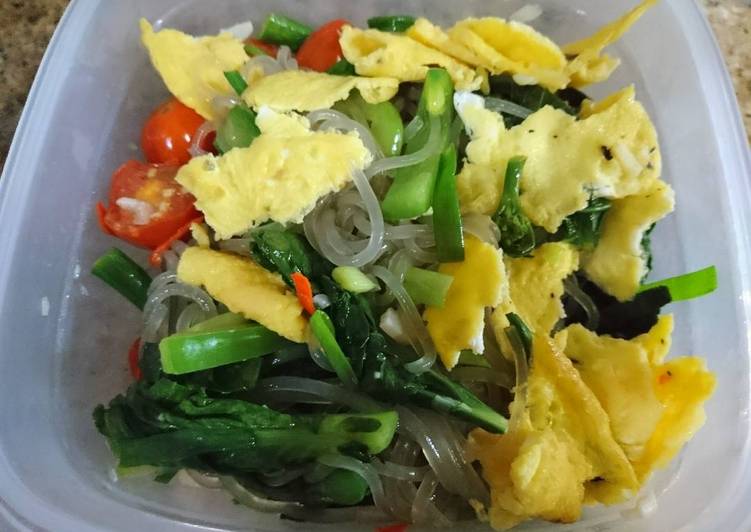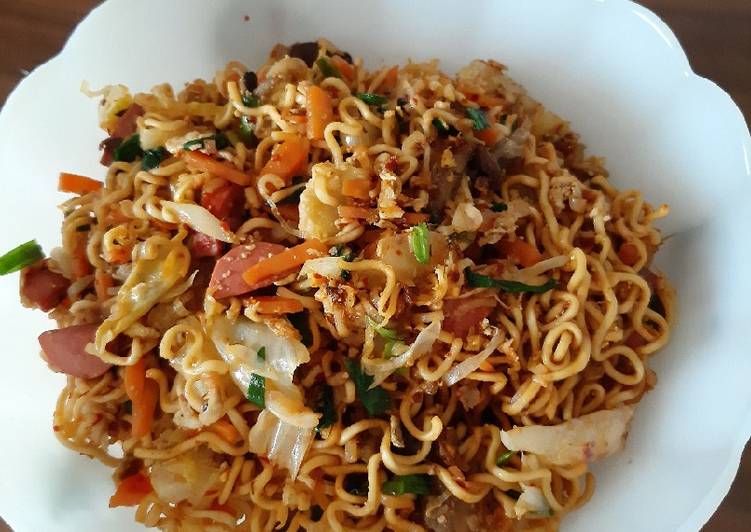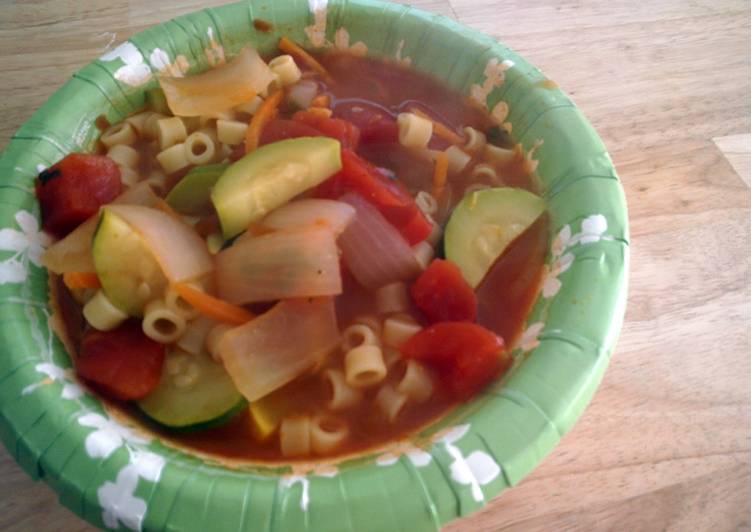
Hey everyone, hope you’re having an amazing day today. Today, we’re going to prepare a special dish, korean japchae (sweet potato noodle). It is one of my favorites food recipes. For mine, I am going to make it a little bit unique. This will be really delicious.
Korean japchae (sweet potato noodle) is one of the most favored of recent trending foods in the world. It is enjoyed by millions every day. It’s easy, it’s quick, it tastes yummy. They’re fine and they look fantastic. Korean japchae (sweet potato noodle) is something which I have loved my entire life.
This classic Korean noodle dish combines translucent sweet potato noodles with lots of stir-fried vegetables and a sweet-savory sauce. To make it, sauté mushrooms, carrots, onion, garlic, and spinach, then throw in the cooked noodles with some soy sauce mixed with brown sugar. But nowadays, the main highlight of the dish is glass noodles, which is made from sweet potatoes, along with colorful vegetables and well seasoned meat.
To begin with this recipe, we must first prepare a few ingredients. You can cook korean japchae (sweet potato noodle) using 12 ingredients and 10 steps. Here is how you cook it.
The ingredients needed to make Korean japchae (sweet potato noodle):
- Get Sweet potato noodles
- Take Garlic
- Make ready Chilli padi
- Prepare Cherry tomato
- Get Baby kailan
- Prepare Bell pepper (capsicum, any colour you want)
- Make ready 1 pcs Egg
- Prepare Spring onions
- Prepare Sesame oil
- Make ready Light soy sauce
- Get Mushroom powder
- Make ready Sugar
Simply put, Japchae is the Korean version of Chinese Chow-Mein (which you probably already love). The main difference is that Japchae uses sweet potato glass noodles. Ingredients You Need to Prepare Japchae Korean sweet potato noodles Paleo japchae. I've been meaning to share this Korean sweet potato noodles Paleo japchae for a while.
Instructions to make Korean japchae (sweet potato noodle):
- Cut the baby kailan, separate the stem and the leaves part.
- Cut cherry tomato to half. Cut bell peppers to thin cuts.
- Cut spring onions to 2cm size. Crushed and diced the garlic. Cut chilli padi.
- Heat up sesame oil. Put in garlic, baby kailan stem and stir fry until the leaves start to change color.
- Put in bell peppers, tomato. Stir fry. Put in mushrooms powder, cut chilli padi and sugar.
- Put in the rest of baby kailan leaves. If you like your spring onions crunchy, turn off the fire and add in spring onions. Mix it a bit and set aside. If you like your spring onions cooked just leave them with the fire on for a while.
- Boil japchae for 8 minutes or you can soak it with hot water for an hour. After soaking it just stir fry it a bit and it will become transparent. After boiling it you can strain the noodles and put in ice water if you want more chewy texture.
- Mix japchae with sesame oil and light soy sauce.
- Beat the egg and put mushroom powder in. Make a thin layer of egg on the pan. You can cut them into thin strips or just shredded them randomly with chopsticks like I did.
- Mix japchae, stir fried vegetables and egg together. They are ready!
I absolutely love Korean sweet potato noodles (aka Korean glass noodles). These Korean sweet potato noodles remind me of Chinese cellophane noodles but are thicker (think Cantonese style lo mein) yet with a lovely translucent and chewy texture. Korean Japchae Noodles is a popular Korean delicacy made from sweet potato starch noodles unlike the other noodles which is made from wheat or rice. Sweet potato is a healthier option compared to other noodles as it is rich in fiber and lesser carbs. Korean Japchae Noodles typically has some meat such as beef, pork or chicken.
So that is going to wrap this up for this exceptional food korean japchae (sweet potato noodle) recipe. Thank you very much for your time. I am confident that you will make this at home. There’s gonna be interesting food at home recipes coming up. Remember to bookmark this page in your browser, and share it to your family, colleague and friends. Thanks again for reading. Go on get cooking!

